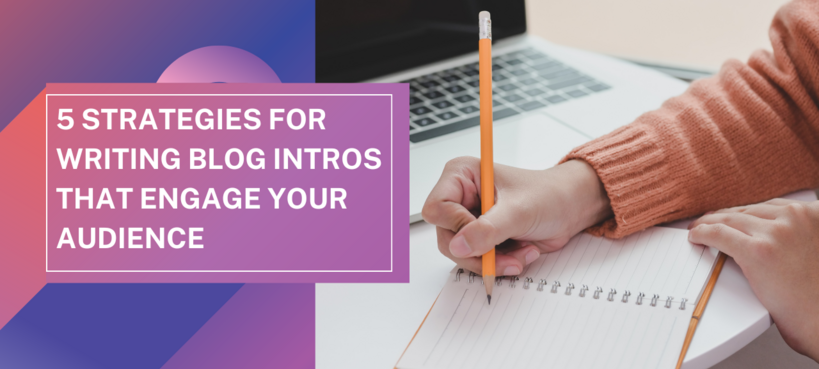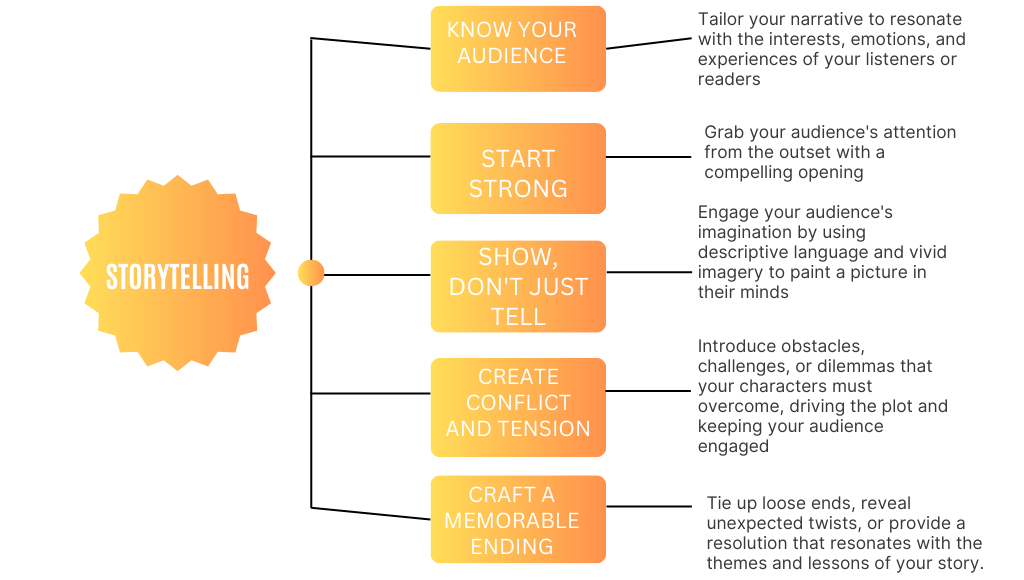In blogging, the introduction captures your audience’s attention and sets the tone for the rest of your post. A well-written blog intro can hook your readers, making them eager to delve into the rest of your content.
What Is a Blog Intro
A blog intro is the opening section of your blog post that aims to grab the reader’s attention and provide a preview of what they can expect from the rest of the article. It sets the stage for the topic you’ll be discussing and should entice readers to continue reading.
Strategies for Writing Blog Intros That Engage Your Audience
Are you tired of crafting blog introductions that fail to captivate your readers from the get-go? Engaging your audience right from the start helps you keep them hooked throughout your entire blog post. Here are some proven strategies to help you write blog intros that grab attention, spark curiosity, and compel your readers to keep reading:
1. Start with a Compelling Hook
A compelling hook is an effective strategy to immediately grab your readers’ attention and draw them into your blog post. Here’s how you can effectively use this strategy:
- Understand Your Audience: Before writing your hook, consider who your audience is and what will resonate with them. Tailor your hook to their interests, pain points, or curiosity.
- Choose an Engaging Hook: Your hook should be interesting, relevant, and intriguing. It could be a compelling statistic, a thought-provoking question, a bold statement, an appropriate quote, or a vivid anecdote.
- Make It Relevant: The hook should relate directly to the main topic of your blog post. It should set the stage for what the reader can expect to learn or gain from reading further.
- Keep It Concise: A good hook is brief and to the point. Aim for a sentence or two that packs a punch and leaves readers wanting more.
- Create Tension or Curiosity: A hook that creates tension or curiosity can be particularly effective. It should make readers feel like they must keep reading to learn more.
- Be Authentic: Your hook should reflect your voice and the tone of your blog. It should feel genuine and aligned with the overall message you want to convey.
2. Optimize For SEO
If your blog post is intended to rank well in search engines, incorporate relevant keywords naturally into your hook. However, make sure that the hook remains engaging and doesn’t feel forced. You can achieve this by:
- Testing Different Hooks: Experiment with different hooks to see what resonates best with your audience. You can use analytics to track the performance of various hooks.
- Connecting to the Rest of the Content: Your hook should seamlessly transition into the main body of your blog post. It should set the stage for what’s to come without feeling disjointed.
- Revising and Refining: Revise your hook to make sure it’s as compelling as possible. Ask yourself if it’s attention-grabbing enough to make readers want to continue reading.
2. Keep Your Intro Concise and Relevant
Keeping your intro concise and relevant is an efficient strategy for writing an engaging blog intro. This is how you can achieve this effectively:
- Conciseness: Start with a brief, attention-grabbing statement that summarizes the main point of your blog. Avoid lengthy explanations or background information in the intro. Aim to pique the reader’s interest and make them want to read more.
- Relevance: Make sure every sentence in your intro is directly related to the topic of your blog. Avoid going off on tangents or including unnecessary details. Focus on providing information that is relevant and valuable to your readers.
- Engagement: Use language that is clear, compelling, and easy to understand. Ask questions, use anecdotes, or present surprising facts to grab the reader’s attention and make them curious about what you have to say.
- Call to Action: End your intro with a strong call to action that encourages readers to continue reading the rest of your blog. This could be a question, a statement that promises valuable insights, or a teaser for what’s coming next.
3. Master The Art Of Storytelling
Storytelling is a great tool for writing an engaging blog intro because it immediately draws readers in, evokes emotions, and creates a connection. Here’s a step-by-step guide on how to use storytelling effectively in your blog intro:
- Choose a Compelling Story: Start by selecting a story that aligns with the theme or topic of your blog post. The story could be personal, anecdotal, or even fictional, but it should resonate with your audience and set the stage for what’s to come.
- Create Intrigue: Begin your intro with a captivating hook that piques readers’ curiosity and makes them want to keep reading. This could be a surprising fact, a thought-provoking question, or a vivid description that transports them into the narrative.
- Establish Relevance: Connect the story to the main point or message of your blog post. Show readers why the story matters and how it relates to the topic you’re discussing. This helps them understand the significance of what you’re about to share.
- Set Up a Mystery: Introduce obstacles, challenges, or dilemmas within the story to create suspense and keep readers engaged. This could be a problem that needs solving, a decision that needs to be made, or a conflict that needs resolution.
- Tell A Personal Story: Share your emotions, thoughts, or experiences related to the narrative. Authenticity builds trust and makes readers feel like they’re connecting with a real person, which can enhance their engagement.
- Paint A Captivating Picture: Paint a vivid picture with your words to make the story come alive in readers’ minds. Use sensory details, descriptive language, and imagery to engage their imagination and create a memorable experience.
4. Preview the Main Points
Previewing the main points is a powerful strategy for writing an engaging blog introduction. Here’s how you can do it effectively:
- Identify the Main Points: Make sure you have a clear understanding of the main points or key takeaways of your blog post. These should be the core ideas or arguments you’ll be discussing in the main body of your post.
- Tease the Reader: Provide a brief overview or teaser of the main points. This can be done in a sentence or two, giving readers a glimpse of what they can expect to learn or discover in the rest of the post. This teaser should be compelling enough to pique their interest and make them want to continue reading.
- Create Intrigue: Use language that creates intrigue and curiosity. For example, you can pose a question related to your main points, highlight a surprising fact or statistic, or share a brief anecdote that relates to your topic. The goal is to grab the reader’s attention and make them curious to learn more.
- Keep It Concise: Keep your introduction concise and to the point. Avoid going into too much detail or giving away too much information. The introduction should serve as a teaser or preview, not a summary of the entire post.
- Transition to the Body: Use the end of your introduction to smooth the transition into the main body of your post. You can do this by briefly mentioning how you will be elaborating on the main points in the upcoming sections, creating a seamless flow from the introduction to the rest of the post.
5. Create a Sense of Urgency or Curiosity
Creating a sense of urgency or curiosity is a great strategy for writing an engaging blog introduction. Let’s learn how you can use it effectively:
- Start with a compelling question or statement: Begin your introduction with a question or statement that piques the reader’s curiosity or creates a sense of urgency. For example, “Did you know that you could be missing out on a game-changing strategy that could double your productivity?”
- Highlight a problem or challenge: Identify a problem or challenge that your readers may be facing and emphasize the urgency of finding a solution. For instance, “With deadlines looming and competition fiercer than ever, it’s important to stay ahead of the curve.”
- Offer a solution: Promise to provide a solution or valuable information that addresses the problem or challenge. This can motivate readers to continue reading. For example, “In this article, we’ll reveal a proven strategy that will not only boost your productivity but also give you a competitive edge in your industry.”
- Use vivid language: Use descriptive and engaging language to evoke emotion and create a sense of urgency or curiosity. For instance, “Discover the untapped potential that lies within your reach, waiting to transform the way you work.”
- Create a cliffhanger: Leave your readers hanging at the end of the introduction, eager to learn more. This can be achieved by hinting at a surprising or intriguing revelation to come. For example, “But first, let’s uncover the hidden truths that could revolutionize your approach to productivity.”
Utilize Strategies for Writing Blog Intros and Unleash the Power of a Captivating Blog Intro Today!
When writing blog intros, use compelling storytelling, strategic SEO techniques, and data-driven optimization to attract readers like a magnet. Bring them along on journeys of discovery and engagement, using each intro to lead customers into the valuable content that lies within your website. Elevate your blog with professional intros. Discover our blog writing services, and learn how we can help you captivate your audience from the first line. Explore our services today!

